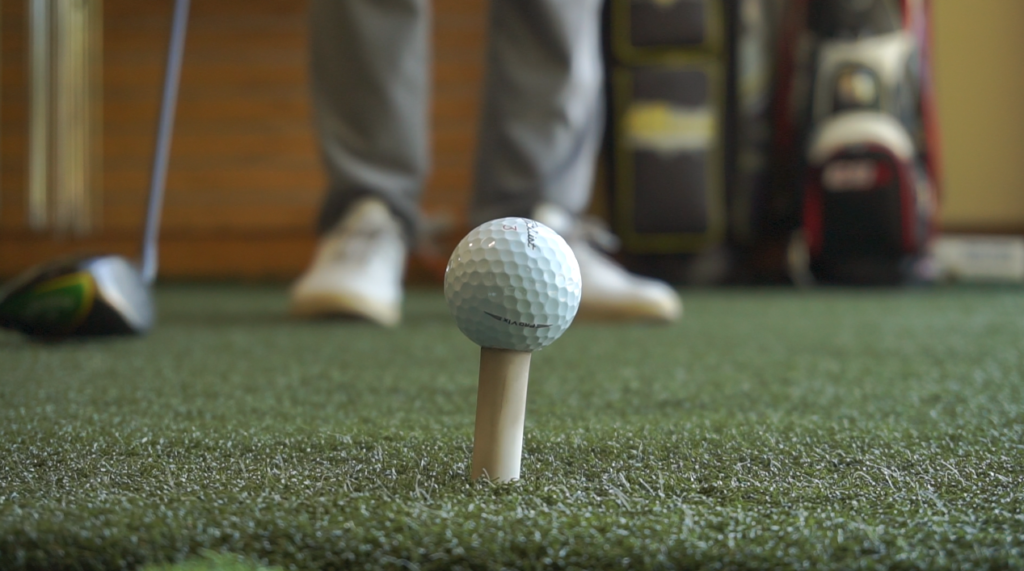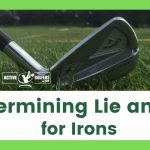The Titleist Pro V1x golf ball is known for achieving the farthest distance. It combines maximum distance with exceptional control.
Golfers always seek to improve their game, and choosing the right ball is crucial. The Titleist Pro V1x stands out for its distance capabilities. Designed with advanced technology, it offers a high launch and low spin, resulting in longer drives.
Professionals and amateurs alike trust this ball for its performance. Its multi-layer construction ensures optimal aerodynamics and durability. While distance is key, the Pro V1x also provides excellent control and feel around the greens. This balance makes it a top choice for serious golfers aiming to enhance their game.
Choosing The Right Golf Ball
Finding the golf ball that goes the farthest can change your game. The right ball helps you maximize distance and improve your score. Let’s explore the importance of ball selection and the factors influencing distance.
Importance Of Ball Selection
Selecting the right golf ball is crucial for every golfer. It impacts your performance on the course. A well-chosen ball ensures better distance and control. Players often overlook the importance of their golf ball. Yet, it can make a significant difference in their game.
Factors Influencing Distance
Various factors affect how far a golf ball can travel. Understanding these elements helps in choosing the right ball. Here are some key factors:
- Ball Construction: The construction of the ball affects its distance. Two-piece balls offer more distance.
- Compression: Low compression balls are easier to compress. High compression balls are for faster swings.
- Dimples: Dimples help reduce drag. They also increase lift for longer shots.
- Cover Material: The cover material impacts the ball’s performance. Urethane covers provide better control and spin.
Here is a table summarizing the key factors:
| Factor | Effect on Distance |
|---|---|
| Ball Construction | Two-piece balls offer more distance |
| Compression | Low compression for slower swings, high compression for faster swings |
| Dimples | Reduce drag and increase lift |
| Cover Material | Urethane covers provide better control |
By considering these factors, you can choose a golf ball that maximizes your distance. Remember, the right ball can make a big difference in your game.
Core Composition
Understanding the core composition of a golf ball can help determine which ball goes the farthest. The core impacts the ball’s performance in many ways. Let’s dive into the types of cores and how they affect distance.
Solid Vs. Multi-layered Cores
Golf balls typically have either a solid core or a multi-layered core. Each type has unique features that influence distance.
- Solid Core: Made of a single material, usually rubber.
- Multi-Layered Core: Consists of multiple layers, each with different materials.
Solid core balls are simpler and generally offer more distance. They are less expensive and are ideal for beginners. Multi-layered cores, on the other hand, provide better control and spin. These balls are often used by experienced players.
Impact On Distance
The core composition greatly impacts how far a golf ball travels. Let’s examine the differences in distance for solid and multi-layered cores.
Solid core balls travel farther due to their simpler design. Multi-layered cores offer more control but less distance. Choose a ball based on your skill level and needs.
Cover Material
Choosing the right golf ball can significantly impact your game. One of the critical factors is the cover material. The cover material affects the ball’s distance, spin, and feel. Let’s dive into the differences between Urethane and Surlyn covers and their impact on performance and durability.
Urethane Vs. Surlyn
Urethane and Surlyn are the two main types of golf ball covers. Each has its unique properties and benefits.
- Urethane: Urethane covers are softer and offer better spin control. They are typically used by advanced players who need more precision.
- Surlyn: Surlyn covers are more durable and provide less spin. They are often used by beginners or players seeking more distance.
Durability And Performance
The durability and performance of a golf ball are crucial for consistent play. Here’s how Urethane and Surlyn compare:
| Cover Material | Durability | Performance |
|---|---|---|
| Urethane | Less durable, prone to scuffs | Excellent spin and control |
| Surlyn | Highly durable, resists scuffs | More distance, less spin |
Choosing between Urethane and Surlyn depends on your skill level and what you need from your golf ball. Urethane is for control and feel, while Surlyn is for durability and distance.

Credit: www.hagginoaks.com
Compression Ratings
When choosing a golf ball, understanding compression ratings is crucial. Compression affects the ball’s distance and feel. Different compression levels suit different swing speeds. Let’s explore low, mid, and high compression ratings and their suitability for swing speeds.
Low Compression
Low compression golf balls have ratings below 70. These balls are softer and compress easily upon impact.
- Feel: Soft and responsive
- Distance: Suitable for slower swing speeds
- Best For: Beginners and seniors
Low compression balls provide better energy transfer for slower swings. This results in longer distances.
| Compression Rating | Suitability |
|---|---|
| Below 70 | Slower swing speeds |
Mid Compression
Mid compression golf balls have ratings between 70 and 90. These balls offer a balance between distance and control.
- Feel: Balanced
- Distance: Suitable for moderate swing speeds
- Best For: Intermediate players
Mid compression balls suit a wide range of golfers. They offer both distance and control.
| Compression Rating | Suitability |
|---|---|
| 70-90 | Moderate swing speeds |
High Compression
High compression golf balls have ratings above 90. These balls are firmer and require faster swing speeds to compress properly.
- Feel: Firm and solid
- Distance: Suitable for faster swing speeds
- Best For: Advanced players
High compression balls are ideal for players with fast swings. They maximize distance and control for powerful hits.
| Compression Rating | Suitability |
|---|---|
| Above 90 | Faster swing speeds |
Dimple Patterns
Understanding the dimple patterns on golf balls can help you choose the right one. The dimples are not just for looks. They play a crucial role in how far the ball travels. Let’s dive into the specifics.
Aerodynamic Effects
Dimples on a golf ball affect its aerodynamics. This means they influence how the ball moves through the air. The dimples create a thin layer of air around the ball. This layer reduces air resistance and increases lift. Less air resistance allows the ball to travel farther.
Different dimple patterns can change how the air flows. Some patterns are better for long distances. Others might offer more control. Choosing the right pattern depends on your playing style.
Role In Flight Distance
The dimple pattern also plays a key role in flight distance. Balls with more dimples often fly farther. This is because they create more lift. But more dimples can also mean less control.
Here’s a quick look at some common patterns and their effects:
| Dimple Pattern | Effect on Distance |
|---|---|
| Hexagonal | Longer distance |
| Spherical | More control, less distance |
| Combination | Balanced between distance and control |
Choosing the right dimple pattern can make a big difference. It can help you hit longer and more accurate shots. Always consider the dimple pattern when picking a golf ball.

Credit: mygolfspy.com
Weather Conditions
Weather conditions play a crucial role in determining how far a golf ball travels. Understanding these factors can help you choose the right ball for optimal distance. Let’s explore the impact of temperature, humidity, and wind on your game.
Temperature Impact
Temperature significantly affects golf ball performance. Warm weather makes the ball fly farther. The reason lies in the ball’s core. Higher temperatures make the core more flexible. This flexibility results in increased ball speed. Conversely, cold weather stiffens the core. A stiffer core reduces ball speed and distance. So, playing in warm conditions can boost your distance.
Humidity And Wind Factors
Humidity also influences the ball’s flight. Humid air is less dense than dry air. Lower air density means less resistance. Thus, the ball travels farther in humid conditions. On the other hand, wind can either help or hinder your shot. A tailwind pushes the ball further. A headwind, however, reduces the distance. Crosswinds can also affect the ball’s trajectory. Learning to adjust for wind is crucial.
Here is a quick table summarizing these effects:
| Condition | Effect on Distance |
|---|---|
| Warm Temperature | Increases distance |
| Cold Temperature | Decreases distance |
| High Humidity | Increases distance |
| Low Humidity | Decreases distance |
| Tailwind | Increases distance |
| Headwind | Decreases distance |
| Crosswind | Alters trajectory |
Understanding these weather factors can help you make better choices on the course. With the right knowledge, you can maximize your distance and improve your game.
Player Technique
Understanding the right player technique can significantly enhance your golf ball’s distance. Your swing mechanics and launch angle play crucial roles in determining how far the ball travels.
Swing Mechanics
Your swing mechanics can make or break your shot. A correct swing path ensures maximum energy transfer. Focus on maintaining a consistent swing speed. A faster swing speed generates more power, making the ball travel farther.
Here are some tips to improve your swing mechanics:
- Keep your grip firm but relaxed.
- Maintain a steady stance.
- Ensure a smooth backswing.
- Follow through completely after striking the ball.
Use the right club to match your swing mechanics. This helps in achieving the desired distance.
Optimizing Launch Angle
Optimizing the launch angle is key to maximizing distance. A higher launch angle allows the ball to stay in the air longer. This results in greater distance.
To optimize your launch angle, consider the following tips:
- Position the ball slightly forward in your stance.
- Adjust your tee height for better ball contact.
- Use a driver with a higher loft.
- Ensure a high follow-through to maintain a good angle.
Combining correct swing mechanics with an optimized launch angle will help the ball travel its farthest distance.
| Technique | Tip |
|---|---|
| Swing Mechanics | Maintain a consistent swing speed |
| Launch Angle | Use a driver with a higher loft |
Mastering these techniques ensures you get the most distance out of your golf ball.

Credit: www.youtube.com
Top Golf Balls For Distance
Finding the right golf ball can greatly improve your game. Golfers always seek the best golf ball for distance. This section highlights the top choices. Dive in to learn about the most popular brands and their performance.
Popular Brands
Several brands lead the market in producing distance golf balls. Let’s explore some of them:
- Titleist: Known for its Pro V1 and Pro V1x models.
- Callaway: Offers the Chrome Soft and Supersoft models.
- TaylorMade: Famous for the TP5 and TP5x series.
- Bridgestone: Produces the E6 and Tour B XS balls.
- Srixon: Known for its Z-Star and Q-Star models.
Performance Comparisons
Comparing the performance of these golf balls helps in choosing the best one. Below is a table showcasing the key features and performance metrics:
| Brand | Model | Construction | Compression | Distance |
|---|---|---|---|---|
| Titleist | Pro V1x | 4-piece | High | Long |
| Callaway | Chrome Soft | 4-piece | Medium | Long |
| TaylorMade | TP5x | 5-piece | High | Longest |
| Bridgestone | Tour B XS | 3-piece | High | Long |
| Srixon | Z-Star | 3-piece | Medium | Long |
From the table, it’s clear that the TaylorMade TP5x stands out. It offers the longest distance among all listed golf balls. Each brand has its unique features. Choosing the best ball depends on personal preference and playing style.
Frequently Asked Questions
Which Ball Will Have The Longest Range?
The ball with the longest range is typically a golf ball. Its design minimizes air resistance and maximizes distance.
What Is The Farthest Golf Ball Hit?
The farthest golf ball hit was 515 yards by Mike Austin in 1974. This record still stands today.
What Golf Balls Are Illegal For Tournament Play?
Golf balls not conforming to USGA and R&A rules are illegal for tournament play. Non-conforming balls include those that exceed size, weight, or performance limits.
What Golf Balls Does Tiger Woods Use?
Tiger Woods uses Bridgestone Tour B XS golf balls. He has been endorsing and playing with them since 2016.
Conclusion
Choosing the right golf ball impacts your distance greatly. Test different brands to find your perfect match. Remember, factors like swing speed and ball construction are crucial. Invest time in finding the best ball to improve your game. Enjoy the extra distance and enhanced performance on the course.
Happy golfing!





